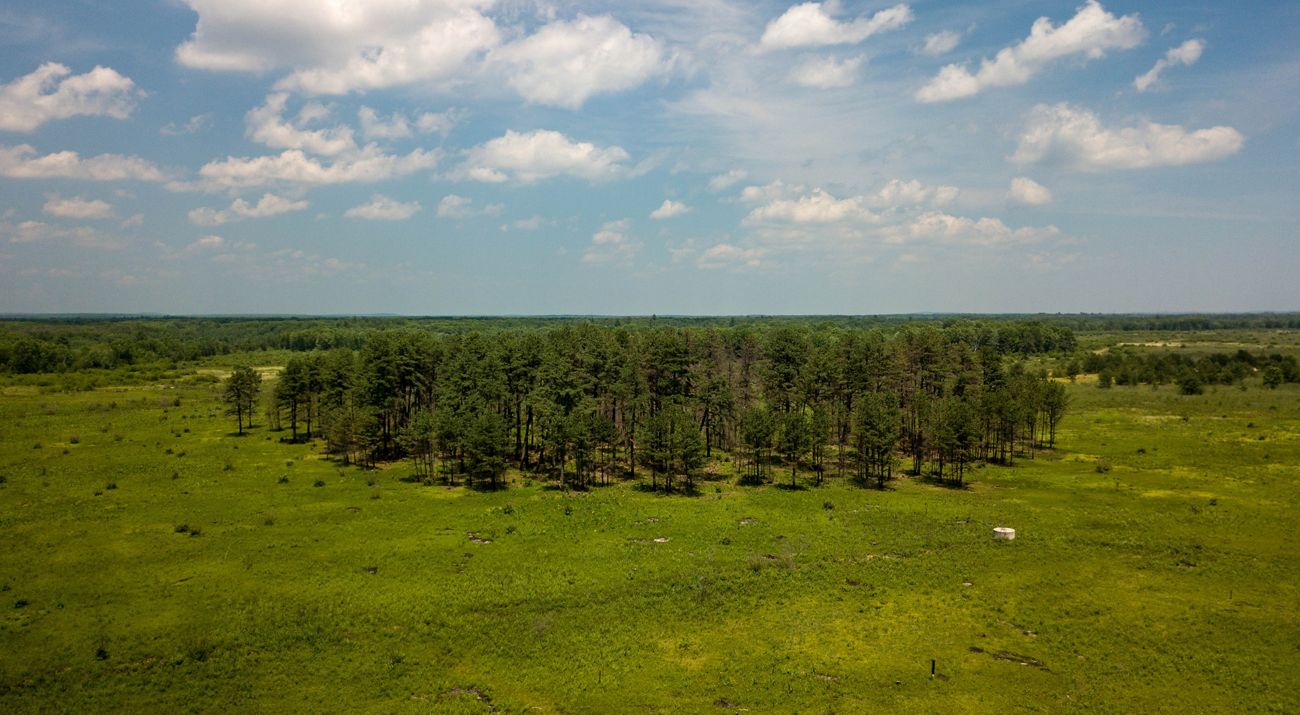Description
See Unique Habitats and Wildlife
Wells Barrens, which abuts both the state’s Kennebunk Plains Wildlife Management Area and the Conservancy’s Kennebunk Plains Preserve, consists of sandplain grassland and early successional forest that has ecological importance as critical wildlife habitat. It was purchased by The Nature Conservancy in 2007 from Wells Blueberry, Inc. Wells Barrens provides habitat for black racer snakes, grassland and early successional forest nesting birds such as vesper sparrow, upland sandpiper, and prairie warbler and rare plant species like the northern blazing star. Furthermore, the preserve lies above an important drinking water aquifer within the Branch Brook Watershed, a key drinking water resource for Kennebunk, Kennebunkport, and Wells. The preservation of this sandplain keeps the municipal drinking water source naturally clean, supplying a valuable ecosystem service to the surrounding community.
The Nature Conservancy also holds a conservation easement on 175 acres adjacent to the preserve that includes much of the buffer to Branch Brook. The land is owned by Kennebunk, Kennebunkport, and Wells Water District.
An Ecologically Important Place
The sandplain grassland, low-shrub heathland, and surrounding forests of Wells Barrens provide habitat for nine state-listed rare plant species and eleven state-endangered or -threatened animals. The area covers an ancient glacial melt-water river delta that is bordered to the north by the Mousam River and to the south by the Merriland River. Wells Barrens, together with Kennebunk Plains, is the largest intact example of sandplain grasslands remaining in New England. Exemplary natural communities at the Wells Barrens include Little Bluestem – Blueberry Sandplain Grassland, Pitch Pine Heath Barrens, Pitch Pine-Scrub Oak Barrens, and Red Maple Alluvial Swamps.
Recognized for Biodiversity
High density upland shrublands, Oak-Pine Woodlands, vernal pools, and spring-fed freshwater streams provide habitat for native eastern brook trout and reptiles including the ribbon snake and three rare turtles: the spotted, wood, and eastern box turtles. The US Fish and Wildlife Service (USFWS) describes the Wells Barrens\Kennebunk Plains area as globally significant for unique vegetation and as an important migratory and grassland bird nesting area, and has documented 50 species of birds nesting on the plains and an additional 86 species of birds shown to be dependent on the area as migrants.
The Importance of Fire Management
Wells Barrens is managed with controlled burns implemented by trained Conservancy and partner staff. The flora and fauna of the Wells Barrens is dominated by fire tolerant plant species that are well-adapted to the nutrient poor soils on site and that respond favorably to periodic fire. Burning maintains the grassland community necessary for nesting habitat for grassland birds. Grasslands and shrublands are ephemeral in the New England landscape, and without burning the grasslands will become invaded with pitch pine, gray birch, red oak, white pine, and pin cherry. Fire creates a change in vegetative structure and composition, creating new openings and initiating a nutrient release that increases food availability for many species. Carefully controlled fires are necessary for the health of the entire grassland ecosystem.
